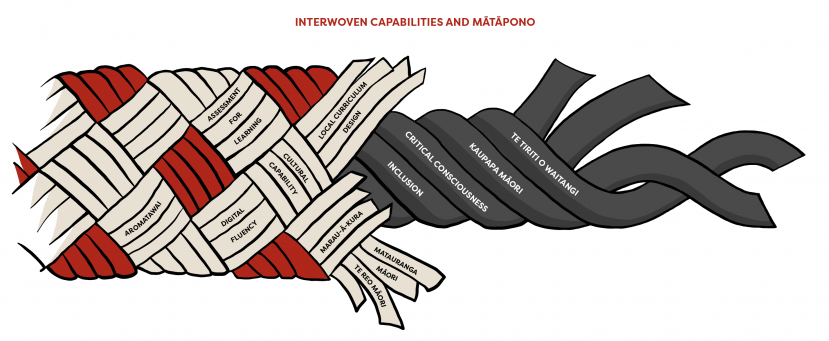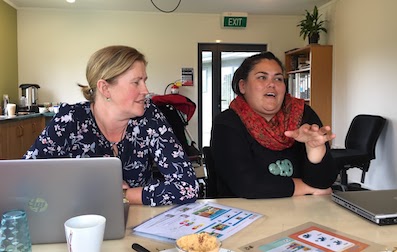Te rautaki āheitanga
The capability approach
Ngā hua o te mahi tahi | Collective impact 
Being capable means “having the knowledge and skills to carry out the specific roles, responsibilities and actions to improve student outcomes”. Here in Aotearoa New Zealand we know what knowledge and skills achieve educational success. We’ve seen pockets of success and have a significant body of professional knowledge about effective teaching, leadership, and learning. But we have not been consistent with this success across all ākonga and learning contexts.
To achieve our aspirations, we need to strengthen capability in all parts of our system. We need to review and strengthen system leadership of curriculum, pedagogy, and assessment. We need to deliberately plan for how teaching and leadership capabilities are built and spread over time. And we need to recognise and invest in kaiako and tumuaki as learners, and in the diversity of career paths and expertise needed in our education system.
– Curriculum, Progress and Achievement Ministerial Advisory Group, 2019, page 8.
Our new approach to PLD connects local aspirations with the national aspirations and direction we have agreed to in our National Curriculum. It assumes that the curriculum capabilities that will best serve ākonga and their whānau are effectively shared through research-informed priorities and locally tailored practices.
To mātou waihanga āheinga matua mā ngā kaiako | Our teacher and leader capability-building priorities
Four curriculum capabilities for kaiako and leaders are priorities across diverse contexts for the New Zealand Curriculum. They were selected as a result of the Education Conversation | Kōrero Mātauranga primarily through the Curriculum, Progress, and Achievement (CPA) review. Other reviews such as the National Certificate of Educational Achievement (NCEA) and the learning support system also informed decision making.
In the image below, the capabilities are interwoven with each other, underpinned by four mātāpono (principles), and bound by a shared kaupapa. The capabilities are:
 Download a copy of Interwoven capabilities and mātāpono
Download a copy of Interwoven capabilities and mātāpono
Schools will be at different points in their development and understanding of each capability and the decisions and strategies they can use to bring them to life. Manutaki and tumuaki have the opportunity to identify the strengths they see and where progress can be made to grow the capabilities. It is the relationships between manutaki, tumuaki, kaiako, and ultimately ākonga that will allow us to “whiria te taura tangata, weave the rope of people” as we grow the capabilities and fulfil our kaupapa.
If the new approach is successful the curriculum capabilities that are prioritised today will strengthen, and new ones will emerge in the future. In contrast, the kaupapa and ngā mātāpono are enduring. They represent fundamentally different ways of thinking, doing, and being that are essential for transformation.
At the same time as this approach is being implemented, Māori-medium contexts can select from the following contexts for learning and growth:
- Mātauranga and te reo Māori
- Marau ā-kura
- Aromatawai
